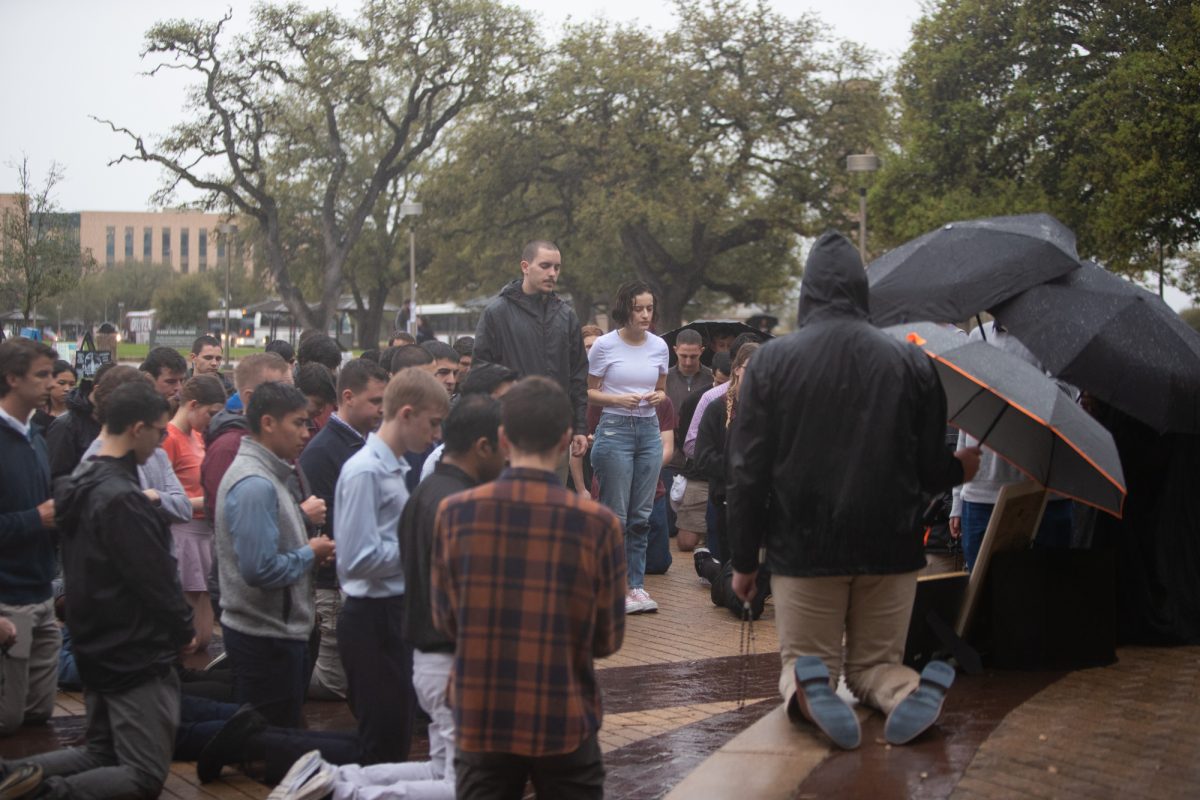Texas A&M’s approval of the Center of Digital Humanities Research (CoDHR) will enhance research in the College of Liberal Arts.
The research center, which is located in the Liberal Arts Building, offers facilities for faculty and graduate students to pursue digital projects in the humanities area. Funding for the center and various projects comes from grants as well as through university and College of Liberal Arts resources.
Laura Mandell, English professor, will serve as the director of the program, along with Daniel Schwartz, history professor and associate director. One of the major aspects of the center is its Humanities Visualization Space, which contains research technology that allows manuscripts to be closely examined through a large touchscreen interface.
Digital humanities is a small field that combines the study of humanities with technology to further the study of humanities with technology to further research in a way that is promoted through non-traditional methods, such as the use of computers, according to Schwartz.
“The best way to understand what digital humanities is, is that it is the use of computers to ask and answer humanist questions that would be difficult or impossible to ask or answer without a computer,” Schwartz said. “That’s like the basic definition: trying to use computers to do this thing that humanists have always done — read texts, interpret them, understand human culture, understand expressions of human experience, but to do that at a scale or to visualize it in ways that would be difficult without computers.”
The Humanities Visualization Space (HVS), a primary project for CoDHR, is useful for enlarging and bringing together projects in a visualized way, which can be vital for research, according to Bryan Tarpley, graduate student and software application developer for CoDHR. The space can be used for projects from a variety of studies and has included projects in mapping, literature, history and paintings.
“We are hoping to explore soon the use of virtual reality for pedagogical purposes,” Tarpley said. “Some concepts lend themselves to being experienced in 3-D, so all kinds of interesting stuff is hopefully going on in the HVS.”
This center is a transition from the Department of English’s Initiative for Digital Humanities, Media and Culture, and will be moved directly under the College of Liberal Arts. This transition will allow the center to be more available to a variety of departments and colleges, as digital humanities is a multidisciplinary field.
“We hope to reach a broader swath of both students and faculty,” Schwartz said. “The service we provide really is to the university very broadly. That is a welcome change.”
Research in the humanities is important because researchers now have an input into what culture and texts will be digitally preserved, according to Schwartz.
“It’s an evolving research landscape, so for the humanities at any university to be at the cutting edge of new research, they need something like a digital humanities center,” Mandell said. “So that’s a really exciting time.”
In most universities, digital centers are shared between humanities students and science, technology, engineering and math researchers, so A&M is taking the lead by having a center specifically dedicated to the humanities, according to Schwartz.
Several projects are underway, including the Early Modern Optical Character Recognition Project (EMOP). It is led by Mandell and seeks to preserve literary cultural heritage through digitizing texts from the hand-press printing period.
“What we see ourselves doing is not just enabling this research, but helping other faculty members come to us with their own questions and their own scholarly data and we want to basically impart these skills to them in order to make interesting digital projects and research,” Tarpley said.
A new twist on traditional research
February 28, 2018
Photo by Photo by Casey Dawson
Texas A&M has approved the transition of the Center of Digital Humanities Research for the College of Liberal Arts.
0
Donate to The Battalion
$2065
$5000
Contributed
Our Goal
Your donation will support the student journalists of Texas A&M University - College Station. Your contribution will allow us to purchase equipment and cover our annual website hosting costs, in addition to paying freelance staffers for their work, travel costs for coverage and more!
More to Discover










